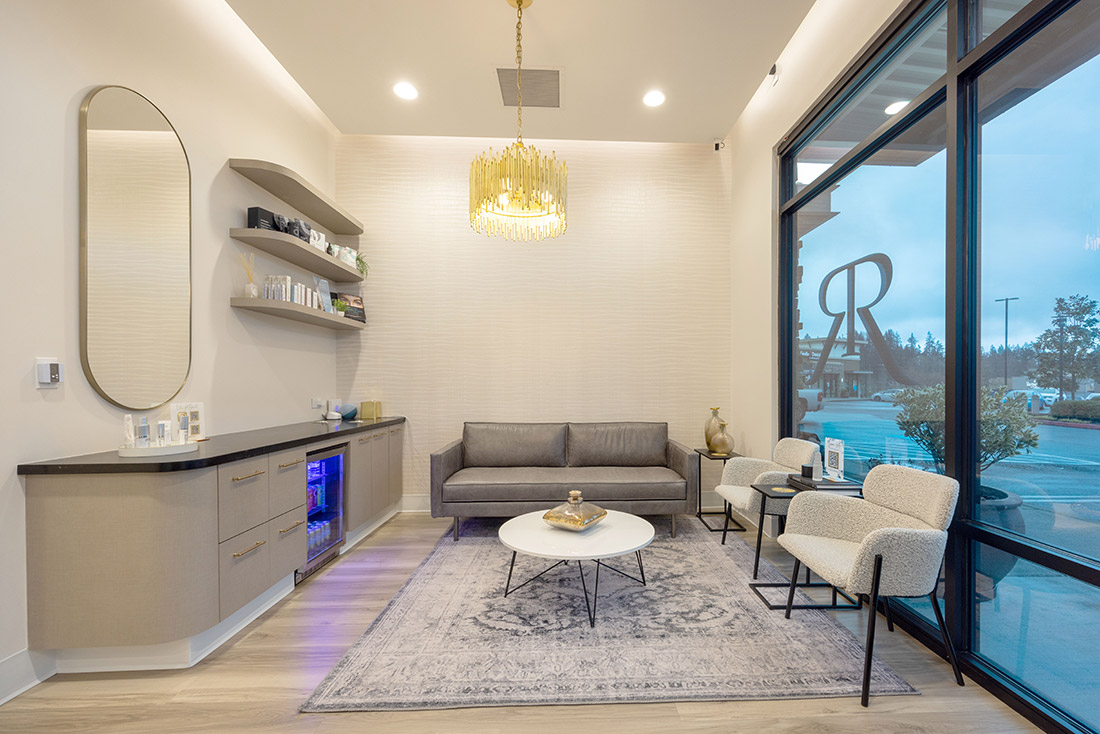“Action is the foundational key to all success.” – Pablo Picasso
Designing healthcare interiors is going beyond regular interior design. Aside from the usual objectives for beauty and functionality, it involves careful consideration of a wide range of factors to ensure the best possible outcomes for patients, healthcare workers, and visitors. Here are some key design considerations that form the foundation of intentional, high-performing, successful medical environments that your patients will look forward to visiting.
1. Safety
The safety of patients, healthcare providers, and visitors should be the top priority when designing healthcare environments. Designers must take into account factors such as the risk of falls, the placement of emergency equipment, and the use of materials that do not pose a hazard to patients or staff. This includes designing spaces that are free of tripping hazards, support or guide rails that will provide support when necessary, using slip-resistant flooring, and ensuring that medical equipment is safely stored and easily accessible. Staff support like mechanical lifts to carry patients safely and protect staff from over-exertion should also be considered.
Considering the pandemic, a greater emphasis on infection prevention and control also becomes a critical consideration. Design considerations should include materials and finishes that are easy to clean and disinfect proper ventilation systems to reduce the risk of airborne pathogens and appropriate hands-free hygiene stations throughout the facility will go far in keeping the infection at bay.
2. Comfort
There is an inherent anxiety involved in medical visits and actively alleviating these fears through better medical interior design will go far in making the experience bearable. Patients should feel comfortable in healthcare environments and providing comfortable seating, temperature control, natural lighting, and noise control among others should be expected. Comfort can mean a lot of things for different patients and care should be taken that even their slightest worries can affect the level of care you are trying to deliver. Privacy can also be a function of comfort, one that also carries on to patients feeling completely safe and secure especially at their most vulnerable.
3. Efficiency
Healthcare environments are also workplaces where the delivery of care must be made expedient and efficient. This includes designing spaces that support efficient workflows, provide adequate storage, and accommodate the latest medical technologies. Healthcare facilities must likewise be designed with the workflow of healthcare workers in mind. This includes considerations such as the placement of medical equipment and the layout of patient rooms to facilitate efficient care delivery. Furthermore, healthcare environments should also include the needs of staff like providing spaces for rest, creating efficient workspaces, and ensuring that they have access to the resources and tools they need to provide quality care.
4. Accessibility
Healthcare environments must be accessible to all individuals, regardless of their abilities. Accessibility is an important consideration in healthcare environments, so patients with disabilities or mobility impairments need to be able to move around easily and access all areas of the facility. Aiming for barrier-free access includes considerations such as wheelchair ramps, elevators, wider doorways, clear signage, and accessible restrooms.
5. Flexibility
Healthcare environments should be designed to be flexible to accommodate changing needs. This includes designing spaces that can be easily reconfigured to accommodate new equipment, changing patient volumes, and new technologies. Flexibility is a way to optimize real estate and maximize the earning potential of a practice. Letting spaces do double duty allows them to be used in more ways than one like exam rooms doubling for procedure rooms. Modularity in their design allows a standard space where various activities can be done and assigned for procedures as needed. Equipment can then be made mobile instead of fixed so practices will need less of them to service multiple rooms depending on the requirement.
6. Technology
Technology is the wave of the future and is fast becoming an essential aspect of modern healthcare delivery. Designers must consider the integration of technology into the healthcare environment, including the placement of electrical outlets, Wi-Fi access points, and the use of telemedicine technologies. Cloud storage solutions that shift the record-keeping capabilities online and IT solutions that automate administrative and reception functions are constantly improving by leaps that have reduced or even rendered certain space requirements obsolete. Technology is making the healthcare environment more streamlined and designers can harness its benefits to the maximum.
7. Sustainability
A new consideration to Healthcare facilities design is sustainability which includes a holistic view of the building performance and an integrated solution to reduce the environmental impact. It will include the use of energy-efficient lighting, water-saving fixtures, and the use of environment-friendly materials. Natural strategies like passive cooling, natural lighting, and the use of recycled/repurposed materials are encouraged to soften the impact on our finite resources. More stringent and detailed metrics for materials can also be followed when seeking standards like LEED (Leadership in Energy and Environmental Design) that examine materials’ sourcing, manufacturing, and performance data.
Designing healthcare environments requires careful consideration of a wide range of factors to create spaces that are safe, functional, and supportive of the needs of patients, staff, and visitors. Our focused experience in medical interior design tells us that success is intentional and that we can deliver the desired results through thoughtful planning. Book one of our complimentary consultations now to get you on your way to medical environments that truly heal. Have a wonderful day ahead!




